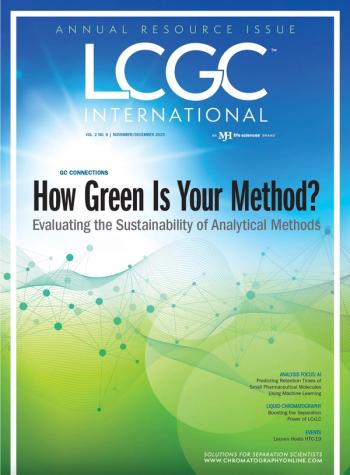
- LCGC North America-03-01-2008
- Volume 26
- Issue 3
Peaks of Interest- Breath Test Diagnosis for Diseases
Researchers at Swansea University (Swansea, Wales, United Kingdom) are using GC-MS-TD technology to analyze the concentrations of volatile organic compounds (VOCs) in breath.
Researchers at Swansea University (Swansea, Wales, United Kingdom) are using GC–MS–TD technology to analyze the concentrations of volatile organic compounds (VOCs) in breath.
Dr. Masood Yousef, a senior research assistant in the Welsh Centre for Printing and Coating, which is housed in the University's School of Engineering, said, "Studies have shown that high concentrations of certain VOCs in breath can correlate with disease. For example, the odor of 'pear drops' esters and acetone in relation to diabetes, ammonia to hepatitis, and dimethyl sulphide to cirrhosis. There are also certain compounds that seem to mark out particular types of cancer."
The GC–MS–TD system works by analyzing all the component chemicals and compounds that make up a patient's breath and creating a breath profile, which allows scientists to identify VOCs that might signify the presence of disease. Dr. Yousef believes that the breath test will provide a more convenient and rapid method for diagnosing serious diseases.
Articles in this issue
almost 18 years ago
Petroleomics — MS from the Ocean Flooralmost 18 years ago
New Chromatography Columns and Accessories at Pittcon 2008: Part Ialmost 18 years ago
Peaks of Interest- MIT Develops Tiny Gas Sensoralmost 18 years ago
Amino Acid Analyzersalmost 18 years ago
Recent Developments in High-Abundance Protein Removal Techniquesalmost 18 years ago
Atmospheric Pressure Photoionization — The Second Source for LC-MS?almost 18 years ago
Method Transfer ProblemsNewsletter
Join the global community of analytical scientists who trust LCGC for insights on the latest techniques, trends, and expert solutions in chromatography.



